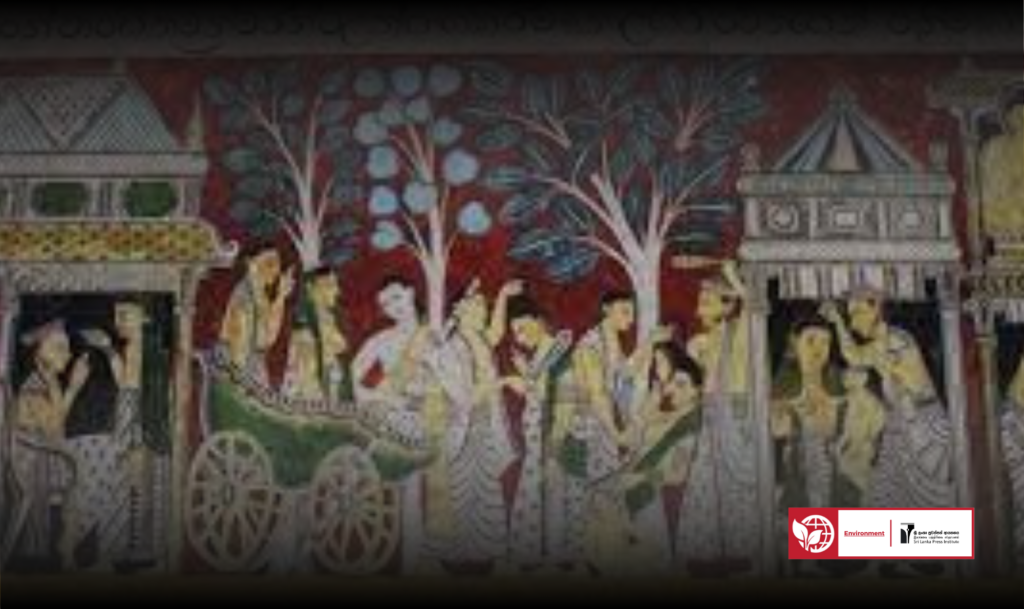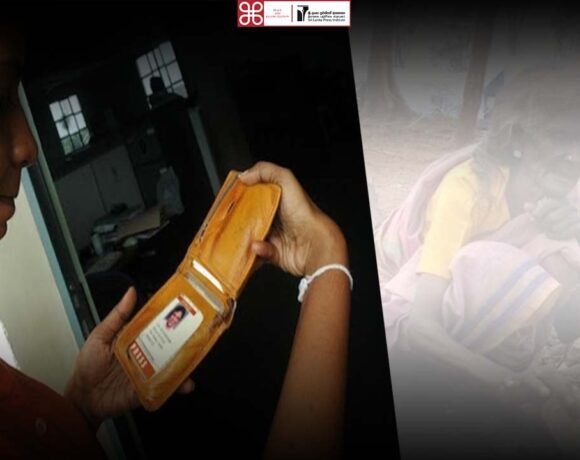The Ancient Legacy Depicted in the Paintings of Kathaluwa Ranwella Purana Viharaya
by Deepa Kumudu Priyadarshani
Located in Koggala, Galle, the Ranwella Purana Viharaya is a local heritage site that embodies the artistic traditions of the Kandyan period in Sri Lanka. Established in the 19th century, this temple vividly represents Sri Lankan society, culture, and Buddhist philosophy.

The Kathaluwa Viharaya is a masterpiece of Buddhist art created during the Kandyan Kingdom period (1592–1815). It provides insights into the sociopolitical and religious context of that era. Through its artistic creations, the temple reflects contemporary attitudes, beliefs, and practices, skillfully depicted by the artists of the time (Rev. Mahinda U., 2013).
Despite Sri Lanka facing colonial influences during this period, the Kandyan kings made great efforts to preserve and sustain Buddhist artistic and cultural traditions.
Social Perspective of Kandyan Art
Ananda Coomaraswamy highlights that local artists developed their distinctive artistic methods, adapting their work to suit the location and environment. (Rev. Mahinda U., 2013).
Social Classes and Traditional Lifestyles
The paintings provide valuable insights into the time’s social hierarchies, castes, and occupations. For instance, the division between the king and the commander in a depicted discussion clearly illustrates class distinctions. (Rev. Mahinda U., 2018).
Interconnectedness and Environment
The paintings at Kathaluwa Viharaya reveal a profound connection between society and nature. They feature trees, animals, birds, and rural lifestyles, reflecting the harmonious relationship between people and their surroundings. (Mallawawe M., 1993).
Cultural Traditions and National Heritage
The artwork at Kathaluwa Viharaya showcases the traditional heritage and national identity of the Sinhala society. It vividly portrays the beliefs, values, and social structures of early Sinhala society. (Charles S.P., 2001).
Elements Depicted Through the Paintings of Kathaluwa Temple
- Interpretation of Stories
The paintings depict Jataka tales in various artistic forms, conveying Buddhist teachings and events to the observer. These illustrations effectively reflect the social systems of the time, such as governance, economic practices, household management, agriculture, and environmental interactions. They provide a contemporary understanding of the society that prevailed. - Interconnection Between Environment and Society
The paintings illustrate societal lifestyles, characters like messengers, and the prevailing mindset and social ideologies of the era. The inclusion of European attire and symbols from European art highlights the colonial influences of the time. - Traditional Aspects of Kandyan Art
According to Professor Siri Gunasinghe, the paintings of Kathaluwa Temple showcase unique elements of regional art styles. They portray the connections between society, agriculture, and the environment through depictions of trees, animals, and birds. Techniques like floral patterns and weaving are used in these illustrations, adding distinctiveness. (Mallawawe M., 1993). - Social Values as a Symbol
The artworks reveal the structure of society at the time, depicting various classes, castes, and occupations. Characters like merchants, villagers, rural women, attendants, military officers, ministers, queens, and the king are vividly portrayed. The paintings of Kathaluwa Temple showcase roles and statuses with clarity, emphasizing their expressions and characteristics. - Artistic Techniques and Materials
The paintings of Kathaluwa Temple feature enduring frescoes and color applications typical of Buddhist art traditions during the Kandyan period. These works belong to the refined and distinctive artistic traditions of the time, showcasing the skill and preferences of local artists.
The paintings of the Kathaluwa Ranwella Ancient Temple serve as a successful and impartial representation of Buddhist art during the Kandyan era. They reflect the values and perceptions of life in Sri Lanka’s Kandyan period, including social, cultural, and religious conflicts and connections.
References
- Charles, S.P. (2001). “Color Symbolism and Meaning in Kandyan Period Temple Paintings.” Department of Cultural Affairs, Colombo.
- Rev. Mahinda, U. (2013). “The History of Buddhist Art in Sri Lanka.” Godage Publications, Colombo.
- Mallawawe, M. (1993). “Plant Depictions in Sri Lankan Art.” S. Godage Publications, Colombo.
Deepa Kumudu Priyadarshani







